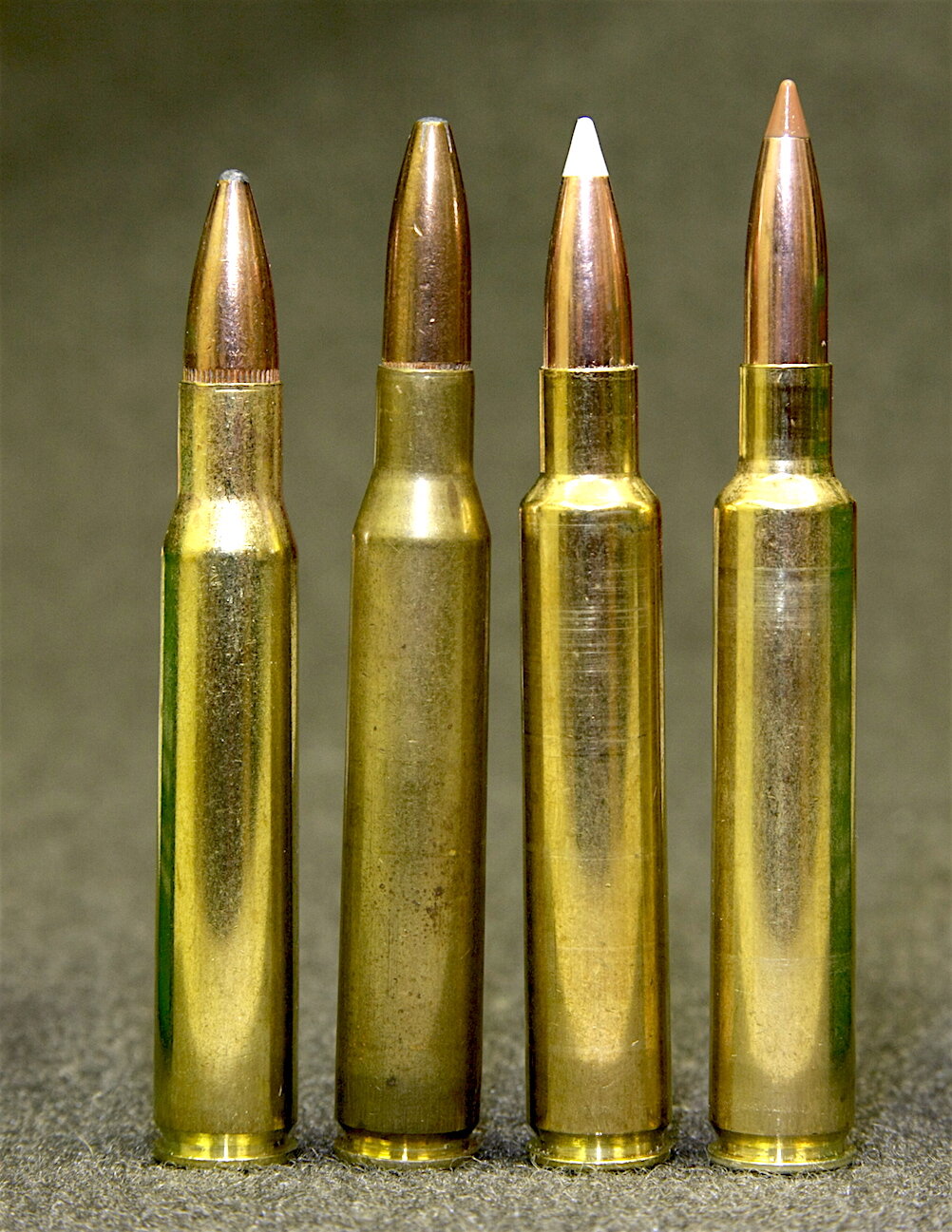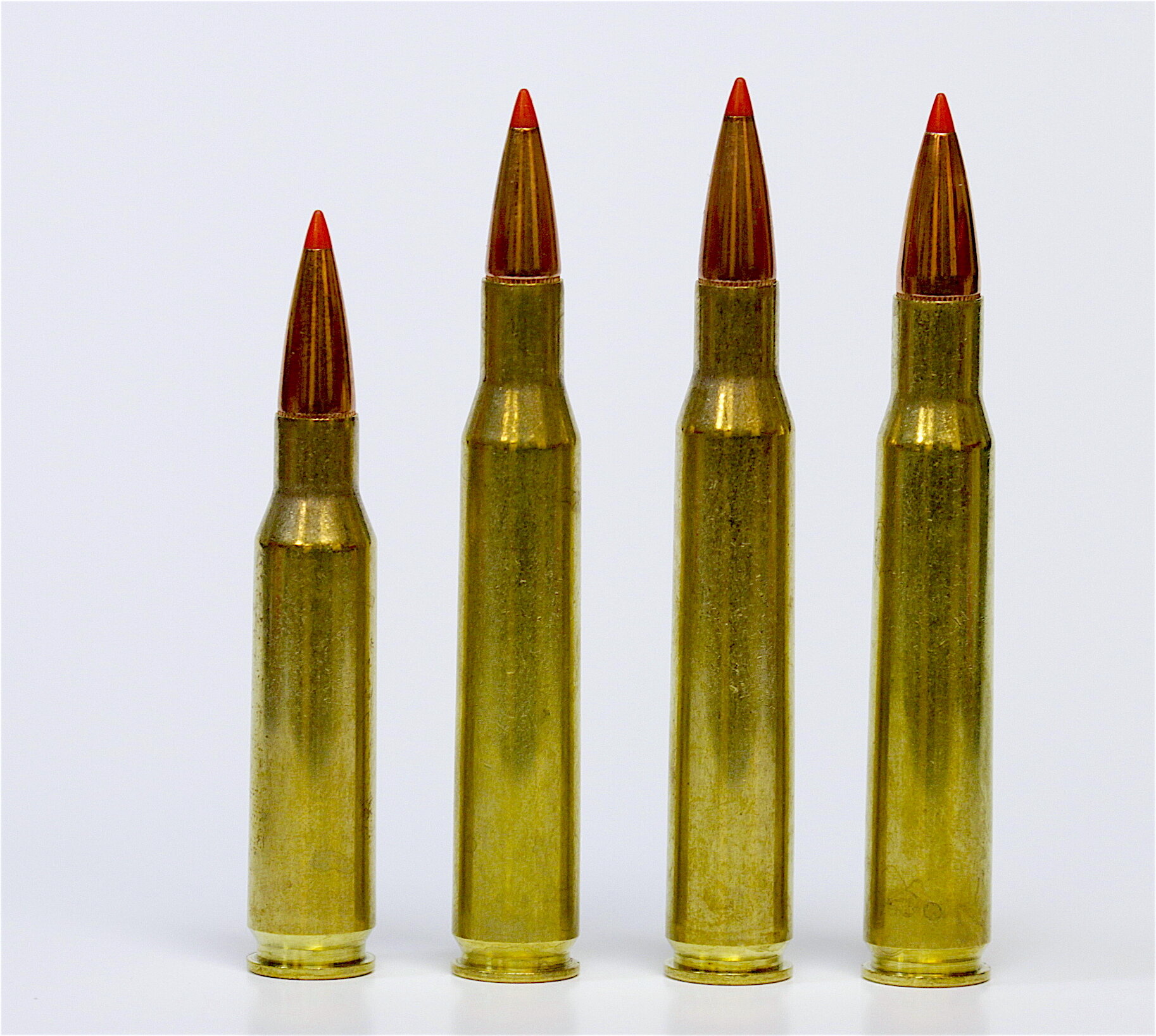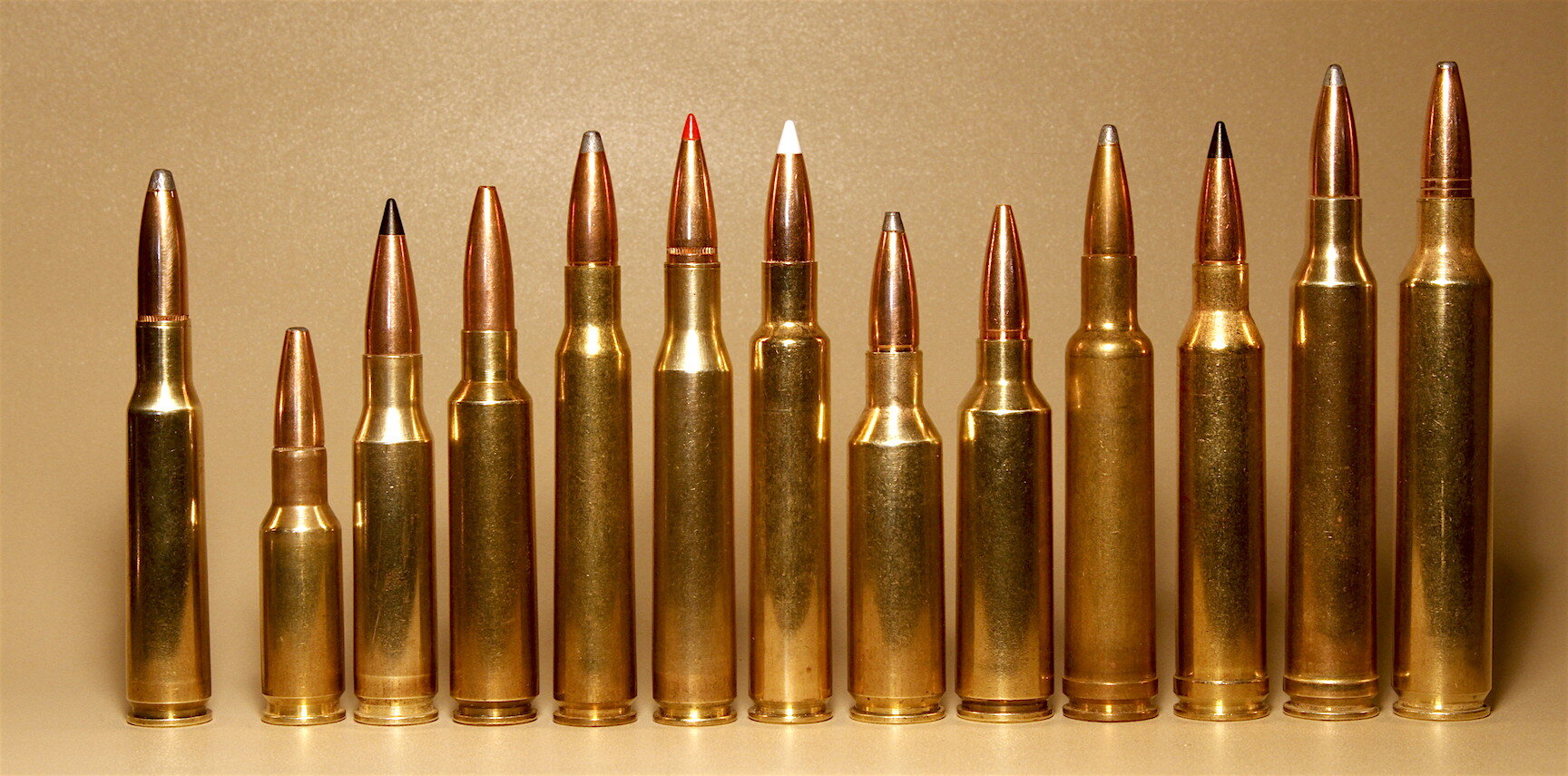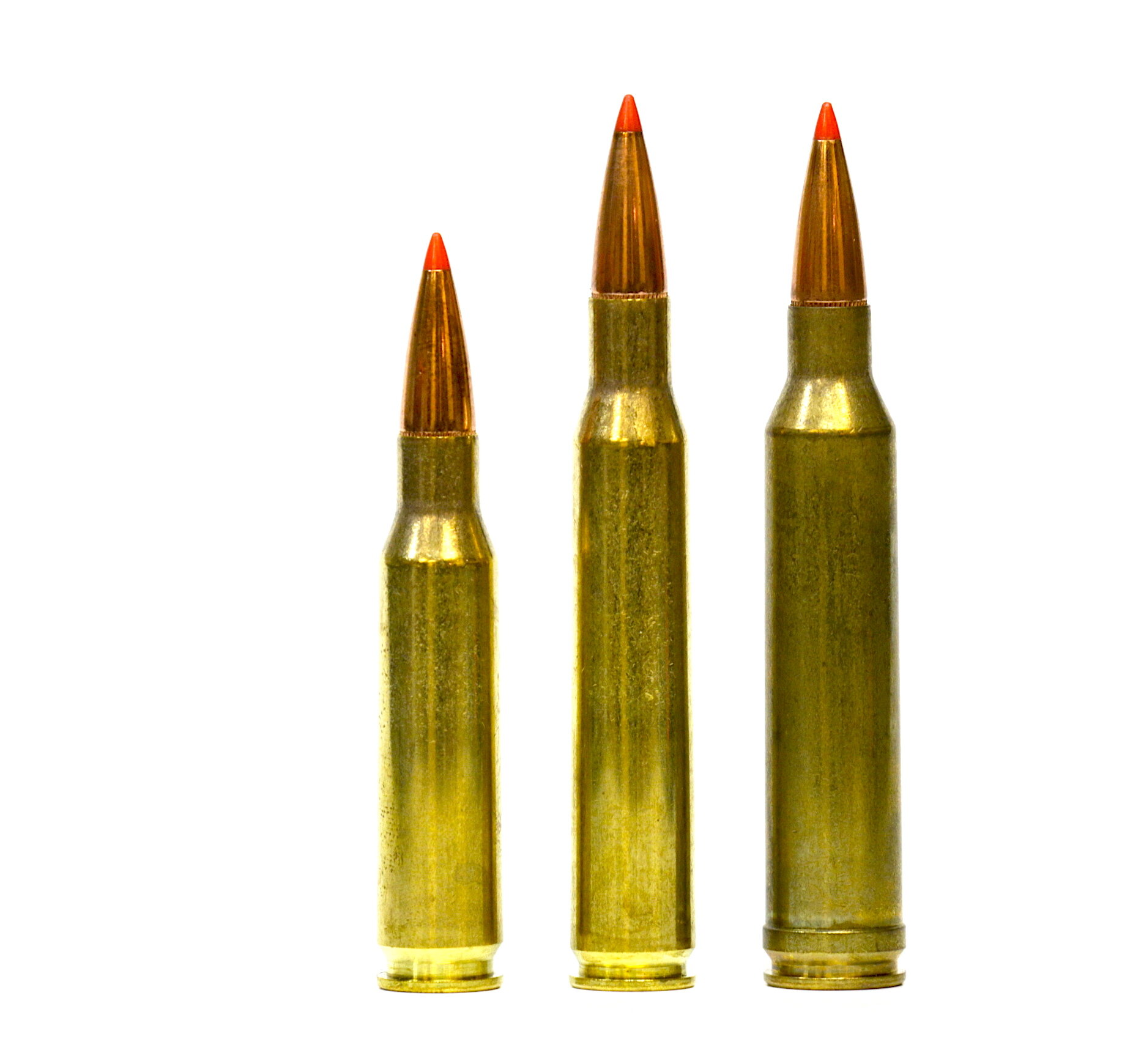280 Remington Amazing History Performance
The unpopular 280 Remington (ever seen or shot one?) can out-perform the highly respected 270 Winchester, the historic 7x57mm Mauser, the modern-Mauser-replacement 7mm-08 Remington, the 30-06 Springfield, the sparkling 25-06 Remington, and even that trendy of trendiness (dare I say it?), the 6.5 Creedmoor.
Matches or beats trajectory and energy of 270 Win. and 30-06 Springfield
Shoots bullets from 100-grains to 195-grains
Effective for game from groundhogs to moose
Is 280 Remington Really a Better Performer Than...?
Hold it. Wait just one doggone minute. Did I just claim that the little known and less appreciated, sadly unpopular 280 Remington is a better big game hunting cartridge than the sacred 270 Winchester and 6.5 Creedmoor? Well… (give me a second to put on my crash helmet and bullet-proof vest.) Sorta kinda maybe... YES.
Before you launch missiles and tirades, please realize that I am not selling 280 Remingtons. I don’t even own one. I am not being paid big bucks (or any bucks) by Remington. I’m not even championing one cartridge over another. My ulterior motive in writing this is to expose the ballistic realities of this neglected, unpopular 280 Remington that really shouldn’t be unpopular. At least not if you appreciate an efficient, balanced, middle-of-the-road, general-purpose big game hunting cartridge that won’t beat you up each time you pull the trigger.
Three brown bears fishing in a stream represent the Goldilocks "just right" performance of the 280 Remington cartridge.
280 Remington As Goldilocks
The 280 Remington could be the Goldilocks of standard-length action hunting rounds. Not too hard, not too soft, not too fast, not too slow, but just right because it shoots mid-caliber .284-inch diameter bullets. It can be loaded with everything from 100-grain Sierra Hollow Points to 195-grain Berger Elite Hunters. It’s at its best with 140- to 175-grain projectiles. This variety makes it adequate for everything from wood chucks and coyotes to moose and brown bears. It’s ideal for whitetails, mule deer, mountain goats, pronghorns, and sheep, and a darn good choice for elk. With good handloads and proper bullets, I’d use the 280 to tackle anything short of Cape buffalo. And I’d hunt those with the 280 Remington if it were legal and someone with a big bore were backing me up. (Preferably an expert dangerous game shot.)
Cape buffalo represent a bridge too far for the 280 Remington.
Historically Speaking, the 280 Remington Has Had a Rough Ride
Before we dig too deeply into the ballistics of this over-achiever cartridge, a bit of history is in order. As you might already know or have guessed, the 280 Remington, like it’s 270 Winchester cousin, sprang from the loins of the old 30-06. Some sticklers will insist the 270 Win. was really made from the 30-03, which was the predecessor to the 30-06 three years before the military realized they didn’t need a 220-grain round nose bullet. About all they did to convert the 30-03 to the -06 was trimmed back a bit of its neck length and mount shorter, lighter, more ballistically efficient 150-grain spire point bullets. The case rim, head, and body diameters remained the same and they remain the same to this day on not just the 30-06 but the 270 Win. and 280 Rem. and 25-06 Rem. and 338-06 and 35 Whelen and, whew, every other variant of this basic case design (which was essentially stolen from the 7x57mm Mauser in the first place.)
280 Remington shown with shorter 7mm-08 Rem., 270 Win. and 30-06.
Although Remington and Winchester were America’s two herd bulls competing for hunter dollars in the middle of the 20th century, neither could claim the Alpha position. Winchester beat Remington to the punch and speed when it created its now famous 270 in 1925, but Remington beat Winchester to the belted magnum party with its 7mm Remington Magnum in 1962. (Never mind that Roy Weatherby beat both of them with his 270 Wby. Mag. in 1943 and 7mm Wby. Mag. in 1944!) Remington tried to match Winchester’s 270 Win. performance and marketing success by unleashing its 280 in 1957, but they screwed it up.
How Remington Made a Mess Instead of an Overnight Success
Based on its .284-inch bullets and ballistic potential, the 280 Remington should have been an overnight success. But such was not the case. Why not? Because Remington, as often happened, misjudged the hunting market. Instead of chambering the new round in its M721 bolt-action (predecessor to the M700,) Big Green put it in its M740 autoloader. Hey, these were the Fabulous Fifties when America was going nuts over automatic this and automatic that. Push button automatic transmissions, automatic home temperature controls, push-button radio controls. You could even push a button on the small juke box at your cafe table and hear Elvis sing Jailhouse Rock. I guess Remington thought shooters wanted rifles that automatically did the difficult job of cycling new rounds into battery. So they stuck their new 280 into the self-loading rifle, downloaded below its ballistic potential and consigned to near obscurity as a result. Hey, it was going to be a tough slog against the 270 Winchester anyway. Throttling the 280 didn’t help.
And as if the M740 autoloader idea wasn’t lame enough, Remington’s next chambering was in its M760 pump! The pump is a fine, fast action justifiably popular with woodlands deer and bear hunters, especially, I hear, in Pennsylvania. But it isn’t the kind of action a serious big game hunter is going to take around the world for sheep, goats, caribou, pronghorn and similar open-country game. Not when they can take a bolt-action 270 Winchester spitting similar-sized bullets at higher velocities. The ANSI maximum pressure for the 280 Remington today is 60,000 psi. The 270 Winchester is set at 65,000 psi. I don’t really understand why, since the 270 Win. has also been chambered in many autos and pumps — but there it is.
Photo shows a long line of 7mm cartridges including the 280 Remington.
At any rate, just five years later, 1962, Remington unveiled its 7mm Remington Magnum and the already under-appreciated 280 became last week’s fish. Remington kept it in the line and did begin offering it in the M721 bolt and later the M700, but by then it was a bit too late. The PR geniuses at the company attempted a trick play in 1979 by renaming the 280 Remington the 7mm-06 Remington, but quickly realized that could be confused with an old 7mm-06 wildcat with different headspacing. Scratch that release. Within a couple of months Remington did a re-release of the same failed round as the “NEW and Exciting” 7mm Remington Express. They increased pressures with this one, at least, in a belated move to match 270 Winchester performance. Alas, hunters started confusing 7mm Remington Express ammo with the 7mm Remington Magnum and all heck broke loose. In a few years Remington crawled back to the obscurity of the 280 Remington title. But at least they got the speed up where it belonged. Unfortunately, that’s not the end of the story.
Image shows 280 Remington express ammo and box.
As if Remington hadn’t already shot itself in the foot several times, in 1980 it fired off another crippling round: the short-action 7mm-08 Remington. This was and is a great short-action cartridge, but good grief! Casual hunters have a hard enough time understanding the non-difference between a .284 caliber and 7mm caliber. Start offering them three new 7mms in the span of a few years and you’re asking for trouble. Remington got it, and the 280 Remington suffered most.
7mm-08, 280 Remington, and 7mm Rem. Mag. cartridges
But that was then and this is now. Most hunters and shooters are sophisticated enough to understand the potential for what is essentially a 30-06 powder reservoir necked down to push narrower bullets with potentially higher B.C.s for flatter trajectories, less wind deflection, and more retained energy downrange. By the way, in addition to being necked down, the 280’s shoulder has been pushed forward .051-inch to prevent it being chambered in a 270 Win. rifle. Alas, a 270 can them be loaded into a 280 Remington rifle, creating 0.051 excessive headspace. Should a firing pin reach the primer and strike hard enough to detonate, a complete case separation could result. So be careful out there.
Now for some quick ballistics. As mentioned earlier the 280 handles bullets from 100- to 195-grains. Most factory ammo is offered with 140-, 150-grains with a few 160- and 165-grain loads hanging around the fringes. Here are some sample factory loads:
Claimed Muzzle Velocities for Some 280 Remington Factory Loads (24-inch barrels)
Remington 140-grain AccuTip Boat Tail 3,000 fps
Nosler Trophy Grade 140-grain AccuBond 3,000 fps
Winchester 140-grain Ballistic Silvertip 3,040 fps
Federal 150-grain Nosler Partition 2,890 fps
Hornady 150-grain ELD-X Precision Hunter 2,925 fps
Norma 156-grain Oryx 2,789 fps
Double Tap Ammunition 160-grain Sierra Game King 2,900 fps
Choice Ammunition 160-grain Nosler AccuBond 2,870 fps
Remington 165-grain Core-Lokt PSP 2,820 fps
Custom 280 Remington Handloads Really Reach Potential
Because 140- and 150-grain bullets are a common weight for deer hunting in a variety of calibers, that would seem a good size for comparison testing against a 270 Win. and 30-06. I’m going to choose some of the highest B.C. bullets I can find in those weights for each of these calibers, push them to top recommended velocities (Nosler Reloading Guide 8) and we’ll see how they match up. All are zeroed for maximum point blank range on a 8” target (peak trajectory no more than 4 inches above line-of-sight,) and fired under the same atmospheric conditions in the usual 10 mph right angle wind. Here we go:
270 Winchester280 Remington30-06 Springfield
Surprised? Not really. We’re essentially using the same quantity of powder to drive bullets of similar weights and aerodynamic shapes. Only the diameters are really different, and not by much. It’s only natural they’d deliver similar trajectories, wind deflections, and energies. But also notice that, due to its slightly higher B.C. bullet, after 100 yards the 280 does deliver a bit more energy, does drift a little less in the wind, and after 400 yards does start to show just a smidgeon less drop.
None of this, in my estimation, makes any difference to a deer or moose and shouldn’t make any difference to your above-average shooter at reasonable hunting distances. Still, an honest assessment would suggest a new rifle buyer choose the 280 Remington. Except… ammunition. You’re going to find a lot more ammo in a lot more flavors in a lot more places with the 30-06 and 270. But if you handload, the 280 comes out on top again.
280 Remington Twist Rates
Speaking of handloading, if you do and hope to take advantage of the highest B.C. bullets, be aware of rifling twist rates. Manufacturers have never settled on one rifling twist for the 280 Rem. Some use 1-10, some 1-9, and a few 1-8. The 1-10 runs on the ragged edge of stability with bullets longer than about 160-grains. Twist is a tough number to nail down because it is bullet length, not weight, that influences stability. And they don't sell or advertise bullets by length. A stubby, 160-grain round nose bullet can be a lot shorter and more easily spin stabilized than a long, sleek, boat-tail 140-grain. To be on the safe side, look for 1-9 twist rifling. And if you want to shoot long, efficient, high B.C. bullets from about 180 grains and heavier, you’ll want a 1-8 twist.
In the market place right now the new 168-grain Nosler AccuBond Long Range looks like the optimum for elk, moose, kudu, sable, oryx, and eland. In addition to a high G1 B.C. rating of around .616, this ABLR features a bonded lead core and an extra thick, strong boat tail base. Sounds like a good blend of the best hunting features. About 60-grains of Magnum powder should push it 2,850 fps from a 24-inch barrel. Run the ballistics on that baby and it'll open your sinuses.
In all-copper bullets check out the Barnes 168-grain LRX rated B.C. 550. That's an impressive B.C. for an all-copper bullet, so it'll be long. You'll probably need that 1-8 twist to stabilize it.
Conclusion
Look, if you already own a 270 Win., 30-06 Springfield, 7mm Rem. Mag., 7x57mm Mauser or even 7mm-08 Remington, you certainly don't need a 280 Remington. But if you're looking for an easy-shooting, all-purpose, middle-of-the-road, standard-length cartridge for hunting darn near anything huntable, you could do worse than the 280 Remington. Despite Remington's worst efforts, this is one great cartridge. Ron Spomer has studied guns, ammo, optics, ballistics and natural history during 50 years of hunting around the world. He thinks he's beginning to understand some of it.























